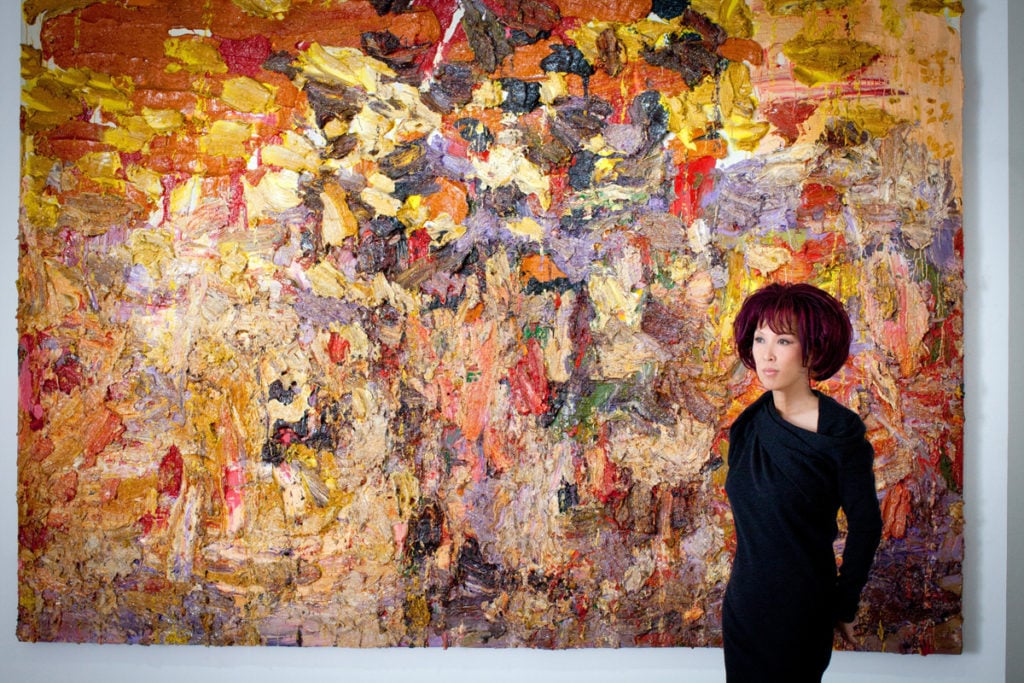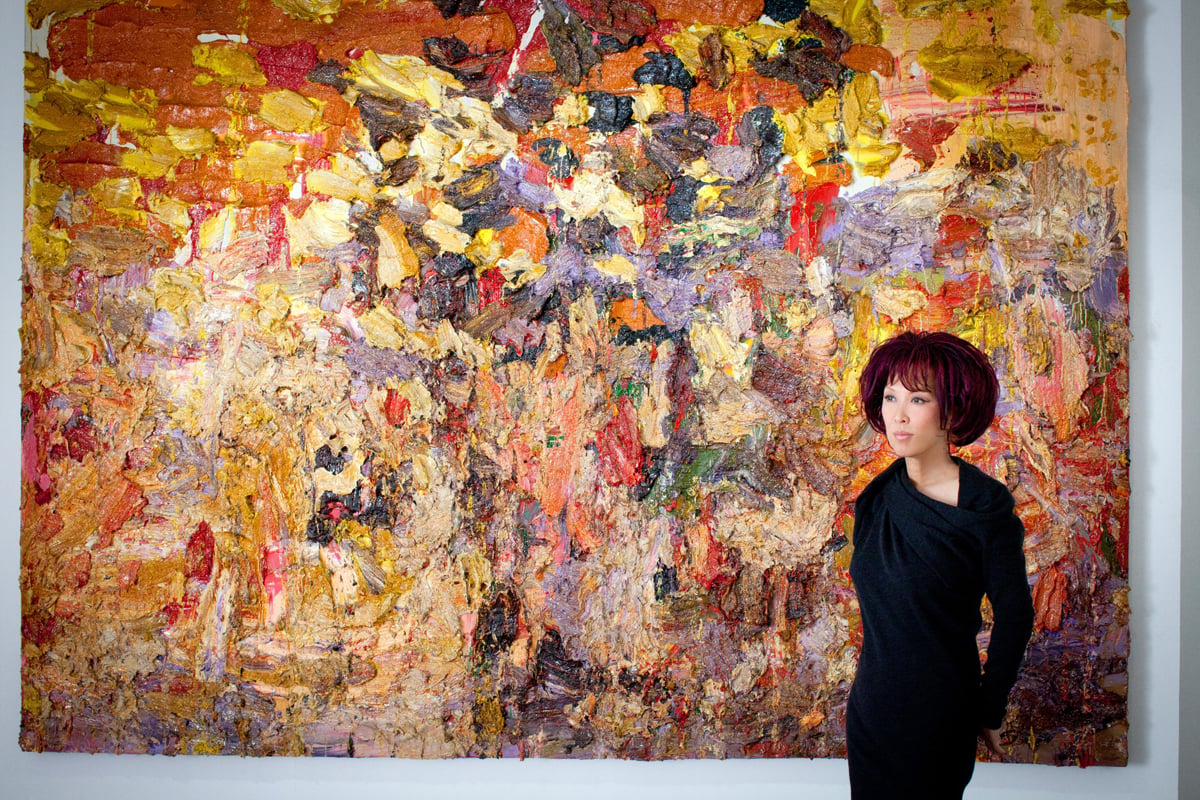Galleries
artnet Asks: Gallerist Pearl Lam
Asian art champion Pearl Lam talked to artnet News hot on the heels of a London outing at Art14.

Asian art champion Pearl Lam talked to artnet News hot on the heels of a London outing at Art14.

Coline Milliard


Pearl Lam in front of The River Full in Red (2006) by artist Zhu Jinshi.
Photo : Courtesy of Julian de Hauteclocque Howe.
Pearl Lam has been an unmissable name on the Asian market for over two decades. A staunch promoter of Chinese art long before it became fashionable—as famous for the artists she represents as she is for her lavish dinners—the Hong Kong-born dealer has created something of an empire, with galleries in Shanghai, Hong Kong, and, as of last January, Singapore. She talked to artnet News hot on the heels of a London outing at Art14.
You were quoted in the FT saying: “I learnt how to be Chinese.” What did you mean exactly?
I am originally from Hong Kong, but have been lucky enough to travel extensively—I spent a lot of time in France when I was younger and was educated in the West. When I eventually came back to China, it took some time to rediscover my cultural identity—rather than my own personal identity.
How has this influenced your work with the galleries?
I am interested in artists who investigate cultural identity. Last year I invited Yinka Shonibare MBE and Jenny Holzer to display their work in Hong Kong for the first time—both debuting with solo shows in our Pedder Building space. In both of these artists’ work, though it is displayed in very different media, we see a questioning of how their cultural identity was formed: an examination of the social structures around them, challenging political agendas and historical influences which continue to have an effect on their modern day identity.
It’s the same with Chinese artists I work with. Su Xiaobai left China to study at arts school in Germany in the late 1980s. This resulted in the relationships now seen in his work between Western abstract expressionism and Chinese traditions he had already learnt. Su views the process of painting as an extension of the Chinese ink tradition, but his use of lacquer, a medium associated with antique Chinese furniture, is very nationalistic.
You are one of the few galleries—but part of a growing trend—dealing with both fine art and design. Do you feel that the two are still too segregated?
Pearl Lam Gallerie is run on the model of the Chinese literati where painting, sculpture, design, are all equal. The work we show is not defined by a hierarchy of genre, as is often seen in the West.
You opened your first gallery in Shanghai but have always had very strong links with the West. How have you seen local Asian markets develop in these two decades?
When I first started, I felt there was no audience for the arts in Hong Kong, which is why I started out in China, where there was an explosion of cultural expression. Now, contemporary art from Asia is setting the scene and there is a flurry of interest worldwide in emerging artists from across the region. Different cities are defining their identities through culture, and there is a growing understanding of the importance of the arts.
Hong Kong has caught up–Art HK, Hong Kong’s first international art fair, did a lot to bring attention back to the art scene in the city and showed how important it would become in Asia. The government of Hong Kong have also recognized the value of culture—and soon we will have M+, the new contemporary art museum.
I wanted to open a third space in Singapore because it’s very distinct from China and Hong Kong, and plays an important role as the focal point for South East Asia, well connected to Malaysia, Indonesia, etc. But beyond this, other countries like Korea, Taiwan, Japan are starting to draw international attention, and producing some of the most exciting work in the region.
You have staff in London, and travel very often to the US. Can you see yourself opening a gallery in the West?
Asia, particularly China, remains my anchor. We present our artists’ work at fairs worldwide, which allows us to reach new audiences. So, I don’t feel that we need a permanent space just yet.
What’s the wildest thing you’ve done to get to where you are today?
Striking out on my own to launch my career in the arts. I just knew what I really wanted to do.